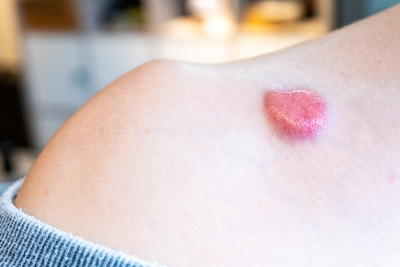Mohs Surgery for Skin Cancer

Mohs surgery, also known as Mohs Micrographic Surgery, is widely viewed as the best way to treat CERTAIN TYPES OF basal cell carcinoma and squamous cell carcinoma: the two most common types of skin cancer. Named for Frederic E. Mohs, MD, who invented an early form of the procedure in the late 1930s, Mohs surgery has the highest cure rate among skin cancer treatments (up to 99%), and spares as much healthy skin tissue as possible, which translates to minimal scarring. Another plus is that Mohs surgery can be done in a single visit, and all lab work can be done on-site.
So what else should you know about Mohs surgery? Here’s a step by step guide of what to expect before, during, and after your procedure.
Preparing for Mohs Surgery
Mohs surgery is a very safe procedure, so there’s no need to worry leading up to your appointment. In fact, you’ll probably be surprised at how easy it turns out to be and how quickly the actual surgery part is over.
That being said, it never hurts to be on the safe side, so you may want to tell your dermatologist or surgeon about any serious health issues you have, and medications you are taking, and any allergies you have before your procedure. You will be asked all of these questions as well before the procedure.
You won’t need to fast the day of the surgery, though some dermatologists recommend avoiding aspirin and ibuprofen for about a week leading up to the procedure. You’ll also want to steer clear of alcohol, fish oil, and vitamin E starting a few days before the surgery. And remember to clear your skin of any make-up if you’re having the surgery performed on your face.
There’s no knowing just how long your surgery will take to complete, so it’s a good idea to free up your schedule for the day. Since you’ll likely be waiting for a long time while your dermatologist does lab work, you may want to bring a book or something else to keep you occupied.
Mohs Surgery Procedure – What to Expect During
Once you arrive, your surgeon may instruct you to change into a hospital gown, or you may be able to stay in your street clothes, depending on the location of your skin cancer. The surgeon will probably drape the area, then inject a local anesthesia for numbing. After this, he or she will use a scalpel to remove a thin layer of your skin tissue. Removing the tissue should only take a few minutes, and while you may feel a little pressure in the area, it won’t be painful.
Next, the surgeon will take this tissue to an on-site lab and examine it under a microscope. During this part of the process, you can relax and bust out that book you brought.
If the surgeon finds any cancerous cells on the borders of the skin tissue, he or she will mark their location and repeat the process, removing one layer of skin tissue at a time until he or she finds a layer of tissue that includes no cancer cells. Many patients only need one or two removals. If it takes longer, expect to be there for several hours.
Following the last removal, the surgeon will either stitch your wound closed or leave it open for healing. It simply depends on the size and location of the wound.
Mohs Surgery Aftercare
After your surgery, it’s natural to worry that you may be left with a scar. But since Mohs surgery generally affects only a small area of your skin and leaves as much tissue intact as possible, the scarring will be minimal.
Your surgeon will discuss the recovery process with you, telling you what to expect as the wound heals and what you can do to ensure it heals safely. In most cases, the surgeon will probably tell you to avoid strenuous exercise or work for 24 to 48 hours. You’ll also learn about possible signs of infection so you can be on the lookout.
A little bruising, swelling, and discomfort in the affected area is perfectly normal, and shouldn’t last too long. If there is pain, you can use a cold compress or over the counter pain medication. At any rate, make sure you follow your surgeon’s instructions so you can heal up safely and start enjoying your life cancer-free.
